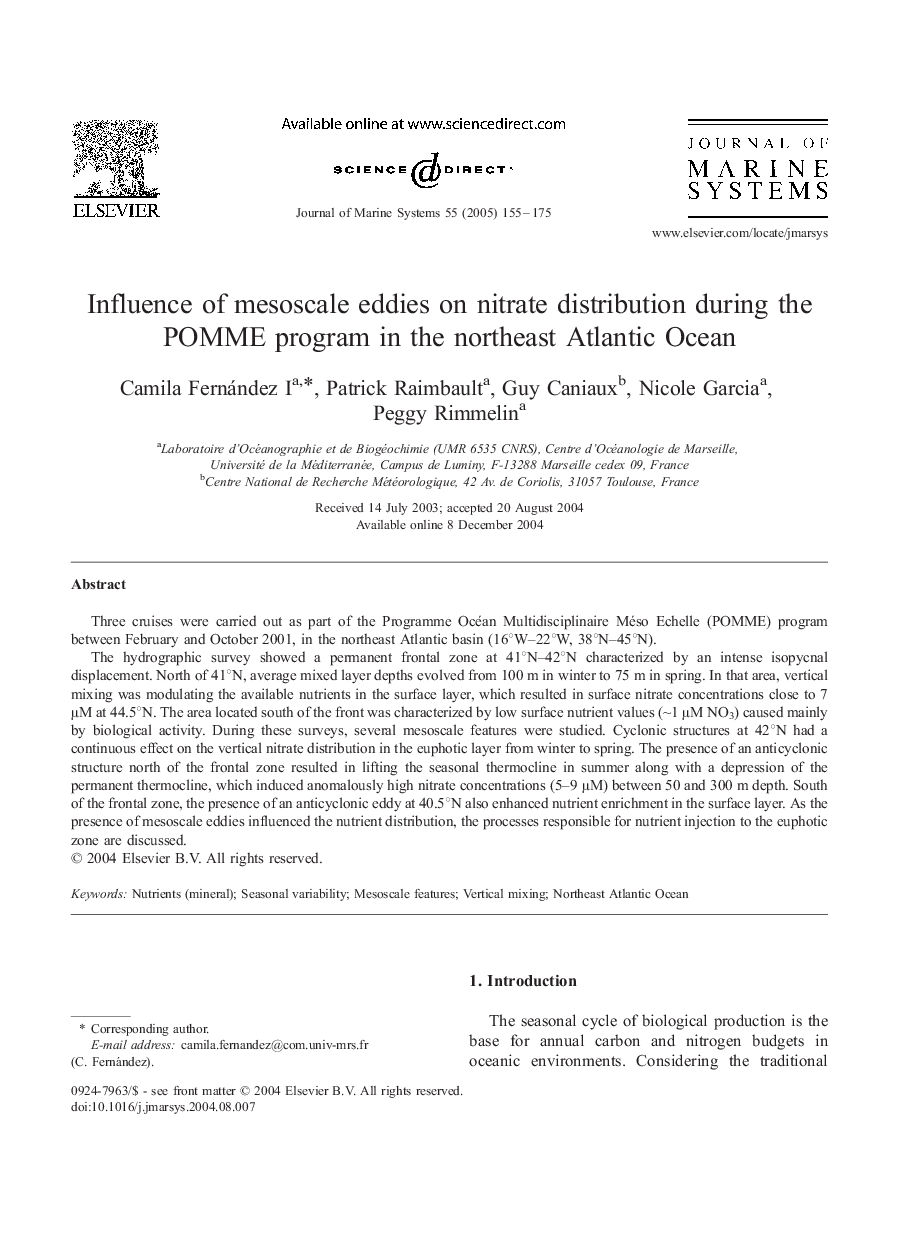| Article ID | Journal | Published Year | Pages | File Type |
|---|---|---|---|---|
| 9483487 | Journal of Marine Systems | 2005 | 21 Pages |
Abstract
The hydrographic survey showed a permanent frontal zone at 41°N-42°N characterized by an intense isopycnal displacement. North of 41°N, average mixed layer depths evolved from 100 m in winter to 75 m in spring. In that area, vertical mixing was modulating the available nutrients in the surface layer, which resulted in surface nitrate concentrations close to 7 μM at 44.5°N. The area located south of the front was characterized by low surface nutrient values (â¼1 μM NO3) caused mainly by biological activity. During these surveys, several mesoscale features were studied. Cyclonic structures at 42°N had a continuous effect on the vertical nitrate distribution in the euphotic layer from winter to spring. The presence of an anticyclonic structure north of the frontal zone resulted in lifting the seasonal thermocline in summer along with a depression of the permanent thermocline, which induced anomalously high nitrate concentrations (5-9 μM) between 50 and 300 m depth. South of the frontal zone, the presence of an anticyclonic eddy at 40.5°N also enhanced nutrient enrichment in the surface layer. As the presence of mesoscale eddies influenced the nutrient distribution, the processes responsible for nutrient injection to the euphotic zone are discussed.
Keywords
Related Topics
Physical Sciences and Engineering
Earth and Planetary Sciences
Oceanography
Authors
Camila I, Patrick Raimbault, Guy Caniaux, Nicole Garcia, Peggy Rimmelin,
